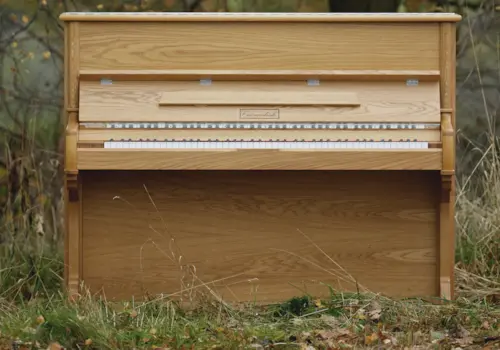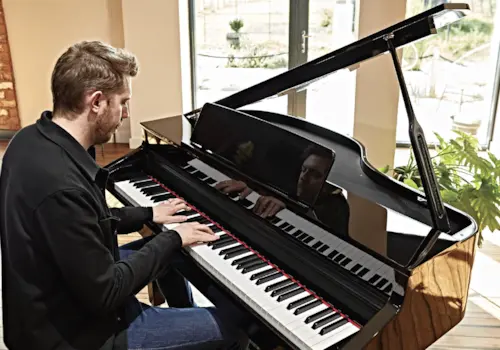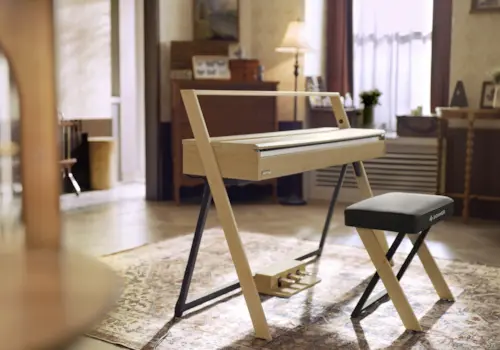Singing. It can be a useful tool for pianists, or any instrumentalist, to help shape phrases particularly when practising slower cantabile-style nocturnes, where it can encourage us to pay closer attention to how we nuance and colour our playing.
But there is another highly beneficial way to incorporate a form of singing into practice sessions and I’ve been using this method for years. Many students have issues defining and articulating various note values and how they relate to each other, which makes keeping a firm pulse all the way through their piece a challenge. I’m referring to ‘small’ beats such as semiquavers in a passage, which so often suffer from unevenness despite seemingly being ‘counted’ rhythmically. This is where singing comes in handy: I call it ‘singing ourselves in time’. Here’s how it works:
1 First of all, locate a section of your piece featuring small note values, or fast passagework.
This may be a passage in semiquavers although if you’re an elementary player, it’s more likely to be quavers. This technique works best on all shorter rhythmic note values until you get the idea of how to do it. Mark in the score your chosen passage and try to ensure that it’s a good few bars in length as it’s harder to achieve this using just one or two bars.
2 Set the metronome to a suitably SLOW pulse.
Or at least a quarter to half of the final tempo, if it’s a fast piece. Play through your passage using the metronome. Now, play that same passage again, but ‘singing’ along as you play with the metronome. You are essentially going to sing the tune, or the most prominent melodic feature within your chosen passage – you do not need to be a good singer! If you’re playing fast passagework in semiquavers, such as those regularly found in a Mozart or Haydn sonata, for example, sing every note of that passage until you get the idea of how to sing along to your playing.
3 Let's now subdivide the beat using your voice.
Once you have become accustomed to singing quavers or semiquavers, now try demisemiquavers. To do this, you’ll need to sing to the syllable ‘la’, or similar: I use the word ‘du’, as in ‘du, du, du, du’, which would signify four semiquavers being sung to one crotchet beat, or ‘du, du, du, du, du, du, du, du’, which would be eight demisemiquavers to one crotchet beat. You are essentially singing the tune or passages’ notes as repeated ‘du’s or ‘la’s extremely rhythmically so that the small note beats are ‘placed’ accurately and evenly within the context of the longer beats (that is, crotchets, minims etc.). In the following example from Mozart’s Sonata in C major K 545, bar 5, RH, the first bar appears as written in the piece and the third bar illustrates how it might be sung as you play it, with two repeated demisemiquavers to every semiquaver:

‘Adding’ beats to every note in this way forces you to become observant about the placing of those beats, and, in turn, the ‘main’ beats as well, and you then pay more attention to your fingers and how they are, or are not, working actively to play evenly and in time. If you see results, you might want to actually play the repeated/double notes in your passage too, as this can foster good finger power.
4 If you do this with the metronome, you should stay in time.
That's because the act of ‘vocalising’ beats will make you really ‘think’ about the rhythm carefully. After a while, stop using the metronome and ‘sing’ using this rhythmic singing pattern through your whole piece. Once you can do it, that is, ‘sit’ on or place the beat accurately, you will immediately see where you are taking too much time or are rushing, or where your fingers are weaker and are letting you down.
5 Most of us can only 'sing' so fast.
Therefore by practising slowly using this method, you will stop the urge to rush, which is so important. It’s an issue across the spectrum whether for an elementary or advanced player, and it’s good to use singing to put the pulse nicely into context.
This method is a hit with my students. They report that it’s exhausting work, both mentally and physically, and it is for me, too, when I do it with them during our lessons, but the results can be spectacular as pupils are made well aware of when they are deviating too much from the main pulse.
For more advice from Melanie, subscribe to Pianist and read her column inside every issue.








